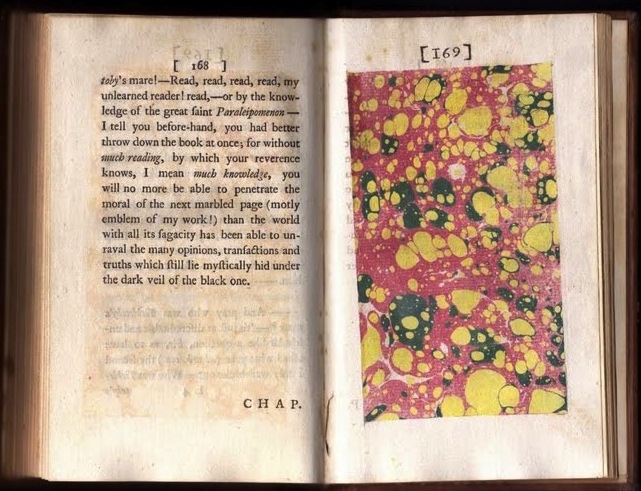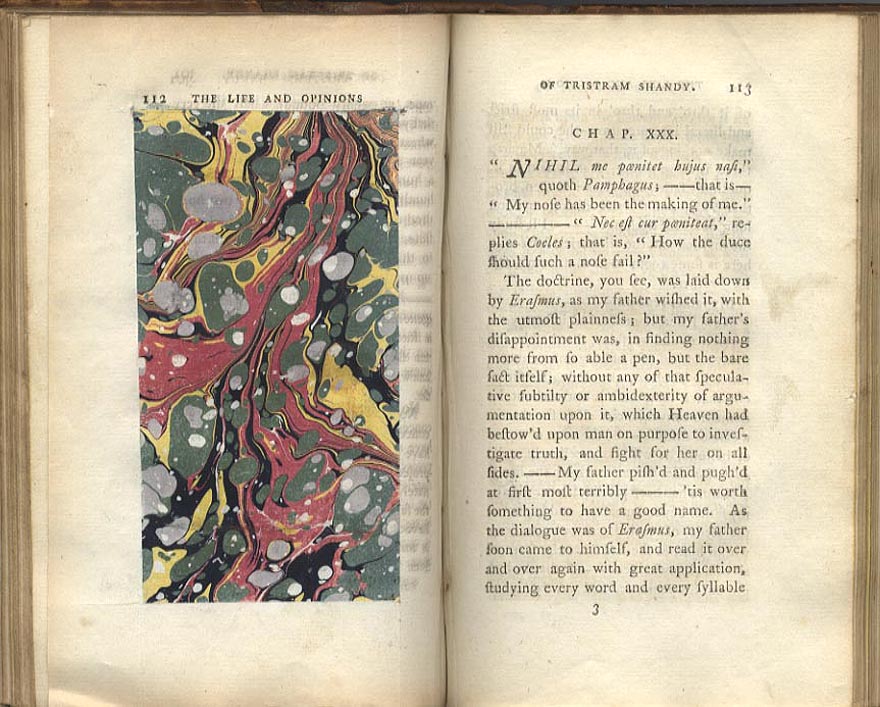
Sterne's Challenge to the Reader: is made exlplicit on the pages before and after the marbled pages. On the page next to the first marbled page below, Sterne's narrator writes: "Read, read, read, read, my learned reader! read . . . "

On the next page (see below), the narrator begins to writing about Walter Shandy' rereading a dialogue by Erasmus. The narrator's account ends as follows: "If you are not a jot wiser by reading him the first time over--never fear--read him again . . . and . . . read . . . forty times through a piece, and never understand a single word."

The chapter begins with Latin beause Erasmus wrote in Latin. Walter Shandy is a fairly learned reader.
OK, then. If we extrapolate from this challenge located on these pages, how may we generalize about the novel as a whole? Can the novel be read, even by a learned reader? What does it mean to read it? What does reading mean? What does "mean" mean? (What is the difference between sense and nonsense, meaning and meaninglessness?) More concretely, what is a "learned reader" other than someone who knows a lot (has read a lot)? Does learning stop one from throwing down the book in frustration? How are we to read / look at marbled pages, especially when the narrator mentions only one marbled page? And what is the relation between the marbled page/s and the veiled black page/s the narrator mentions? What is the difference between print on paper and the page? And what does it mean for the narrator to call the marbled page an "emblem?" And don't forget the adjective Sterne uses for "emblem," namely, "motley" (what a jester wears).
Is the marbled page on 112 below to be read in relation to Chapter XXX on noses? Or is there no relation between the facing pages?


SIZE MATTERS! (Pocketsize book; published in nine volumes, each separately bound)
Digital facsimile of the text in the modernized in the modernized edition above.